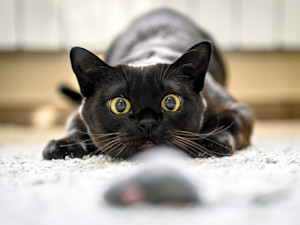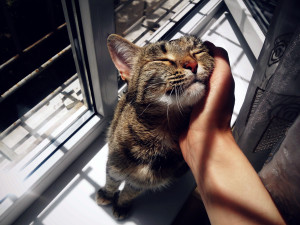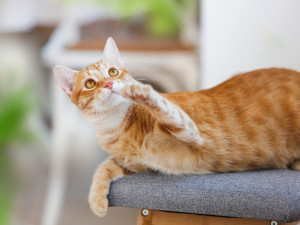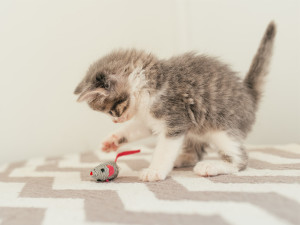Declawing is Illegal in the UK – Here’s Why
A veterinarian explains why the inhumane surgery is no joke
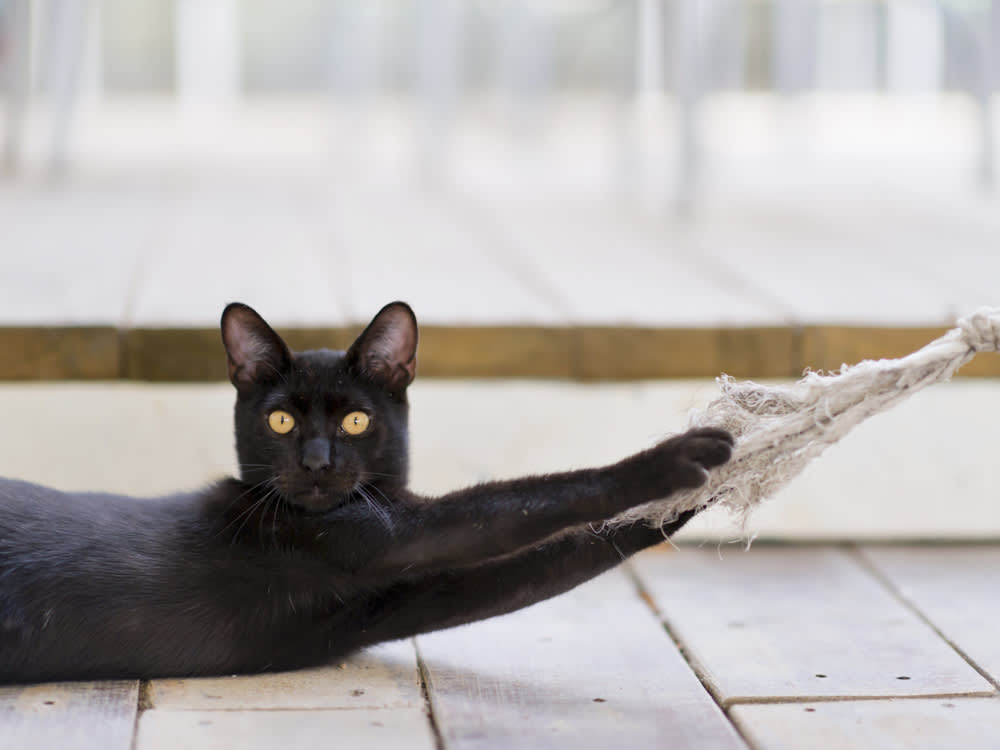
share article
It’s a fact: cats have claws. Claws that can ruin furniture and tear through human flesh like a knife through, well, human flesh. Does that justify the removal of said claws? Cats use their claws to hunt, but most indoor cats don’t hunt, so do they really even need them?
Honestly, just writing that last question makes my skin crawl. It’s like saying to a human, “You don’t run. Do you really need those feet?” It’s not a perfect analogy, I know, but given that declawing can actually hobble a cat for life, it’s much more appropriate than comparing the procedure to, say, an overzealous manicure.
A cat’s claws, after all, are not merely fingernails sharpened to a point. They grow from, and are thus attached to, the last bone on each of their toes, so their removal is essentially an amputation, by guillotine clipper or scalpel – broadly equivalent to cutting off the distal phalange of a human finger or toe. Could you live without the tips of your fingers and toes? Yes. Would you choose to? Of course not. Would your life be harder if you did? Most definitely.
And yet many people around the world still elect to declaw their cats. Declawing cats has been illegal in the UK since 2006 but declawed cats are sometimes imported from other countries and there are sadly still illegal ways to declaw your cats in the UK. We spoke to Dr Annette Louviere, a veterinarian specialising in cats and an active member of the American Association of Feline Practitionersopens in a new tab, to learn more.
When did declawing first become a thing?
Declawing techniques were referenced in veterinary literature all the way back to the 1950s, but it wasn’t until the 1970s that it became common practice.
What are the potential negative side effects of declawing?
Aside from surgical complications related to the procedure, other primary concerns for declawing include both the immediate postoperative pain and the potential for chronic pain. Due to their stoic and subtle nature, pain can be difficult to decipher in cats. And so the true long-term physical effects of declawing cats are still being studied, but they include nerve damage, bone spurs, lameness, back pain and improper regrowth of claws – if a specific portion of the bone is not removed, then there is a chance that the claw will regrow; this regrowth can be deformed and may result in an abscess and pain at the site.
What about psychological side effects?
Unfortunately, there isn’t a short answer for this question. Numerous studies have made links between declawing cats and an increase in undesirable behaviours – including inappropriate eliminationopens in a new tab, aggression, and bitingopens in a new tab – while alternative studies have indicated no significant difference in behaviour problems of clawed cats versus those that have been declawed. Due to this conflicting information regarding the psychological effects of declawing cats, it’s an area which requires further research to truly understand (and that’s partly why there’s so much controversy still surrounding the procedure).
Does declawing somehow make cats more passive? Less aggressive?
No. Declawing will not address or stop the cat’s aggression and, in some scenarios, risks making the situation worse. Aggression casesopens in a new tab should be handled through a veterinarian or board-certified veterinary behaviourist. And if it’s a sudden temperament change, then a deeper dive into medical causes for the aggression should be a part of the conversation.
What kind of medical reasons might there be for legally declawing a cat?
To remove a tumour or if the toe/claw is damaged beyond repair. Additionally, it’s been described in severely painful cases of paronychia (inflammation of the soft tissues around the nail) that cannot be controlled by medical interventions. In cases like these, however, the procedure involved removing the claw from a specific toe (or toes), rather than the whole foot.
What are some non-surgical alternatives to reduce scratching?
There are several great alternatives to declawing:
Adding deterrents to the furniture surfacesopens in a new tab, like safe double-sided tape or anti-scratch tape.
Introducing appropriate scratching surfaces in these areas (it’s also worth noting that cats can have scratching preferences including location, surface type and surface angle).
Applying nail caps, such as Soft Paws.
Once initial steps are taken, the focus can shift to providing environmental enrichment for the catopens in a new tab and redirecting the undesired scratching to a more desirable location (aka re-training where the cat scratches).
Scratching is a perfectly natural behavioUr for cats. It functions as a means of grooming by removing old layers of the claw, serves as communication by leaving behind their scent, and facilitates full body stretching.

Charles Manning
Charles Manning is an actor, writer, and fashion/media consultant living in New York City with his two cats, Pumpkin and Bear. Follow him on Instagram @charlesemanningopens in a new tab.
Related articles
![orange cat lifting its paw]() opens in a new tab
opens in a new tabWhy Do Cats Raise a Paw?
Are they saying “Hi” or trying to high-five? Cat behaviourists decode your pet’s cryptic paw signal
![A woman with curly black hair sitting in front of a dark purple and yellow backdrop while looking down affectionately at her two cats sitting on her lap]() opens in a new tab
opens in a new tab7 Ways to Build Your Cat’s Trust In You
If your cat still approaches you with a figurative arched eyebrow of scepticism, try these tricks to put them at ease
![Two cats in a living room that appear to be arguing.]() opens in a new tab
opens in a new tabMe-OW! Should I Break Up a Cat Fight?
Between actual cats...
![A kitten playing with a mouse cat toy.]() opens in a new tab
opens in a new tabHow to Keep Your Kitten From Making You the Toy at Playtime
Your cat deserves to play, but you deserve to walk away unscathed
![]() opens in a new tab
opens in a new tabHow Cats Hunt
Cats have evolved to be skilled hunters, but how and why do they still do it?

